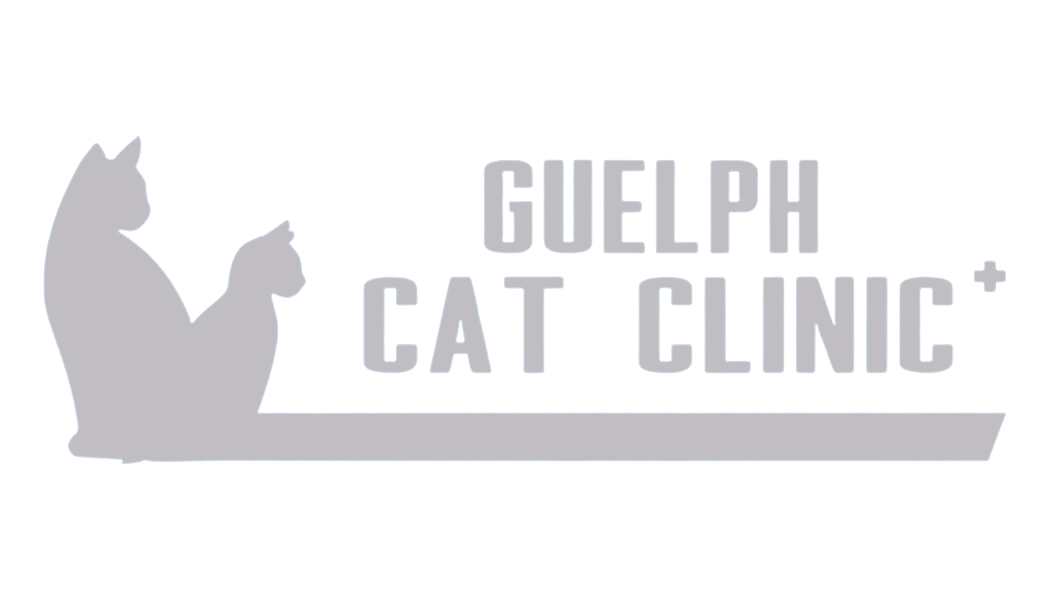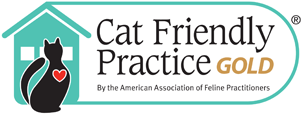It is that time of year once again when we celebrate our feline friend’s oral health during Pet Dental Health Month in February. As February approaches, it is important to understand the components of our cat’s oral dental health. Many cats are also at risk of developing dental disease. In fact, 85% of cats aged three years and older have some sort of dental disease and only approximately 10 percent of cats will go through life without experiencing a dental problem. Dental disease begins with the accumulation of dental plaque, which is a film of bacteria that develops on the surfaces of the teeth. When the plaque is left undisturbed it can harden and calcify to become tartar or calculus. This tartar or calculus that has formed on the surfaces of the teeth can cause mild to severe periodontal disease.
Gingivitis
Gingivitis involves the inflammation of the gums or gingiva in a cat’s mouth. Gingivitis is common in cats that have a large amount of plaque and tartar on their teeth surfaces. Gum recession may occur in cats with severe gingivitis. Severe gingivitis can also be very painful for your cat. In order to treat feline gingivitis, it is recommended that your Guelph Veterinarian performs a professional dental cleaning on your cat under general anesthetic. In most cases, the scaling and polishing of the teeth is the only necessary treatment. In cases of severe gingivitis, gum recession or when the tooth root is exposed, the tooth may be required to be extracted.
Feline Stomatitis
Feline stomatitis involves the inflammation of the oral cavity. This inflammation spreads from the gingiva to other areas of the mouth. The exact cause of the development of stomatitis is still unknown, but some cases are associated with viral feline diseases such as Feline Immunodeficiency virus and Feline Calicivirus. Some theories suggest that feline stomatitis may occur as a result of a cat’s own immune system responding too aggressively to the presence of bacteria or other infectious agents in the mouth. Stomatitis is most often a very painful oral disease and cats may display difficulties eating, drooling or pawing at their mouths. In order to treat feline stomatitis, it is recommended that your Guelph Veterinarian performs a professional dental cleaning on your cat under general anesthetic. In severe cases of stomatitis, the extraction of all the cheek teeth is recommended as a means of treating the stomatitis.
Periodontitis
Periodontitis involves advanced gum disease in which the gingiva is very inflamed and there are large amounts of tartar on the teeth surfaces. Gum inflammation and recession cause the ligaments that surround and support the teeth to weaken and this causes teeth to be very unstable. Bacterial infection is also very common at this stage of periodontal disease. At this stage, extraction of the tooth under general anesthesia is the only effective treatment.
Feline Resorptive Lesions
Feline Resorptive Lesions are common among both young and older cats. It involves erosion of the tooth. The cause of the formation of a resorptive lesion is currently unknown. They are commonly formed around the gum line, but can also be found below the gum line as well in some cats. This makes identifying and diagnosing a resorptive lesion very difficult. Feline resorptive lesions are best diagnosed by your Guelph Veterinarian by probing the teeth and gums under general anesthesia and by taking dental radiographs. Resorptive lesions are extremely sensitive and cats will often exhibit oral pain. If the resorptive lesion is left untreated, the gradual erosion of the tooth will continue to progress until the crown of the tooth fractures off, leaving just the tooth roots behind. Extraction of the tooth is always necessary to treat a resorptive lesion.
Dental Fractures
In the situation in which your cat’s tooth becomes fractured, it is important for this tooth to be assessed further while your cat is under a general anesthetic. Your Guelph Veterinarian will probe the fractured tooth and will take dental radiographs to determine if the fractured tooth in question will need to be extracted. Fractured teeth are usually required to be extracted if the pulp cavity is exposed, which contains the nerve and blood supply for the tooth.
The Importance of Dental Radiographs
It is always recommended to take dental radiographs each time your cat is under general anesthetic for a professional dental cleaning and assessment. Cats cannot tell us when their teeth are diseased and sore and most cats also do not exhibit signs of oral pain either. Dental radiographs are important because they show the roots of the tooth under the gum line, which is not visible to the naked eye. Dental radiographs are the only means for your Guelph Veterinarian to know if there is a dental problem and to determine the best way to treat the particular dental problem. It is impossible to practice veterinary dentistry without dental radiographs.
It is important to remember that when it comes to your cat’s health, maintaining healthy teeth and gums is important. Dr. Maggs and the staff of the Guelph Cat Clinic, your Guelph Veterinarian for cats, would like to remind everyone that even though, February is National Pet Dental Health Month, it is important to practice good oral hygiene in our feline friends all year around!


